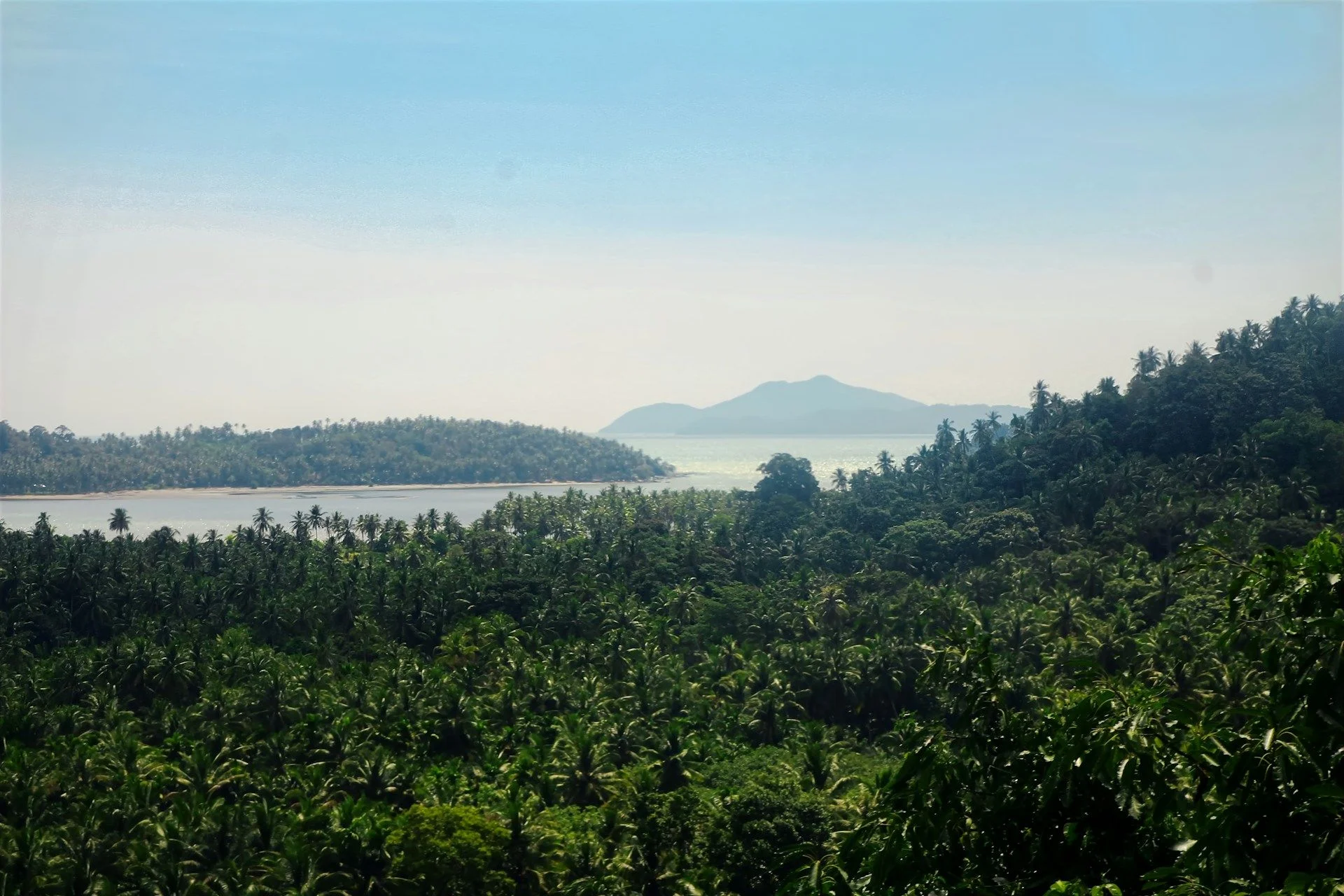Cultural Excursion Planning Service in KalimantanRainforest rivers, rare wildlifeand cultural crossings

Advantages of traveling
to Indonesia
Gateway to Borneo’s rainforests
Balikpapan and Pontianak offer direct access to Kalimantan’s lush interiors—rivers, jungle lodges, and national parks where travelers meet orangutans, proboscis monkeys, and endemic birdlife.
Cross-cultural heritage and river life
Pontianak sits on the Equator and blends Malay, Dayak, and Chinese influences. Traditional stilt villages and floating markets give visitors a deep sense of Kalimantan’s river-based life and layered identity.
Eco-lodges and jungle adventure
Kalimantan is ideal for nature-first tourism. Eco-resorts near national parks and wildlife corridors offer boat safaris, trekking, and educational travel rooted in rainforest preservation and indigenous knowledge.
Gateway to Borneo’s rainforests
Balikpapan and Pontianak offer direct access to Kalimantan’s lush interiors—rivers, jungle lodges, and national parks where travelers meet orangutans, proboscis monkeys, and endemic birdlife.
Cross-cultural heritage and river life
Pontianak sits on the Equator and blends Malay, Dayak, and Chinese influences. Traditional stilt villages and floating markets give visitors a deep sense of Kalimantan’s river-based life and layered identity.
Eco-lodges and jungle adventure
Kalimantan is ideal for nature-first tourism. Eco-resorts near national parks and wildlife corridors offer boat safaris, trekking, and educational travel rooted in rainforest preservation and indigenous knowledge.

Useful articles
and recommendations from experts
Tourism in Kalimantan (Balikpapan, Pontianak): A Complete Guide
Why Kalimantan is attractive for travelers
Kalimantan, the Indonesian portion of the island of Borneo, remains one of Southeast Asia’s most compelling and least explored destinations. Unlike Bali or Java, Kalimantan offers travelers a different kind of adventure—one rooted in the rhythms of rivers, the richness of rainforests, and the resilience of indigenous cultures. Cities like Balikpapan and Pontianak serve as gateways to this vast natural and cultural frontier, providing access to ecotourism, wildlife encounters, and heritage-rich journeys.
For tourists looking to go beyond mainstream routes, tourism in Kalimantan represents an opportunity to engage deeply with nature and tradition. Here, travelers don’t just visit attractions—they move through ecosystems, navigate living rivers, and connect with communities that have coexisted with the forest for centuries. Whether it’s cruising through mangroves, trekking to waterfalls, or learning from Dayak elders, Kalimantan offers immersive, low-density travel shaped by environment and authenticity.
Key tourism offerings and travel styles
The two key urban hubs—Balikpapan in East Kalimantan and Pontianak in West Kalimantan—anchor different styles of exploration. Balikpapan is known for its access to conservation areas and marine parks, while Pontianak opens the door to equatorial heritage, river culture, and Dayak traditions.
Wildlife and rainforest exploration
Kalimantan’s natural crown jewel is its rainforest, one of the oldest and most biodiverse on Earth. National parks such as Samboja Lestari near Balikpapan and Betung Kerihun and Danau Sentarum near Pontianak offer boat safaris, canopy walks, and primate observation. The chance to see orangutans in semi-wild settings is a major draw. At Samboja, visitors can volunteer or tour the Borneo Orangutan Survival Foundation, where rescued apes are rehabilitated.
Other species include proboscis monkeys, hornbills, sun bears, and clouded leopards, though most require early morning hikes or night safaris to spot. The landscape is shaped by rivers, so much of the travel is water-based: guests stay in floating lodges, board houseboats, or paddle canoes along tributaries deep into the forest. The Mahakam River and Kahayan River are lifelines to remote Dayak villages and jungle routes rarely seen by tourists.
Indigenous culture and local traditions
Dayak communities—long considered guardians of the forest—offer insights into Kalimantan’s intangible heritage. Visitors can stay in longhouses, participate in traditional rituals, or observe intricate woodcarving and beadwork. In West Kalimantan, the fusion of Dayak, Malay, and Chinese influences is especially visible in Pontianak’s food, architecture, and cultural celebrations.
Pontianak, located directly on the Equator, hosts an Equator Monument that marks zero latitude. Visitors often take photos straddling both hemispheres and attend Equator Day festivals in March and September. The city’s floating houses, river taxis, and markets reveal the importance of water in daily life.
In both Pontianak and Balikpapan, mosques, Chinese temples, and Catholic churches coexist in neighborhoods shaped by centuries of trade and migration. Visitors can explore bustling food markets, try regional specialties like sour snakehead fish soup or layered Sarawak-style cake, and meet artisans keeping regional crafts alive.
Nature-based retreats and sustainable stays
Eco-tourism in Kalimantan is growing cautiously, with a focus on low-impact infrastructure and community participation. Jungle lodges near conservation zones provide an immersive stay—often with full-board meals, naturalist guides, and a blend of education and adventure. Popular retreats near Balikpapan include mangrove lodges and beachside chalets that support marine conservation.
For slow travelers, wellness seekers, and conscious explorers, Kalimantan offers digital detox zones, yoga terraces in the forest, and birdwatching sanctuaries far from crowds. Some lodges provide packages for volunteering, citizen science, or cultural exchange, helping guests engage more meaningfully.
Inland towns like Sintang and Putussibau are entry points to more remote eco-destinations in the Heart of Borneo, where guides help organize trekking, bamboo rafting, and overnight homestays with Dayak hosts. These areas provide a more rugged but rewarding form of ecotourism.
Local logistics and visitor regulations
Kalimantan is reached by air via multiple regional airports. Balikpapan’s Sultan Aji Muhammad Sulaiman Airport (BPN) connects to Jakarta, Surabaya, and international destinations like Singapore. Pontianak’s Supadio Airport (PNK) offers daily flights from Jakarta and some Malaysian cities. From either airport, ground or river transport is used to reach lodges, parks, or rural towns.
Domestic flights, ferries, and long-distance buses connect Kalimantan’s cities, but distances can be vast. For example, Pontianak to Putussibau is an 18–24 hour river journey or a day-long drive. Logistics vary by season: during the rainy months (October–March), rivers swell and jungle tracks may become inaccessible. Dry season (April–September) offers better transport but higher temperatures.
Entry to national parks may require permits, which tour operators usually arrange. Visitors should carry insect repellent, waterproof gear, and respect cultural etiquette—such as asking permission before taking photos in villages. Modest dress is recommended in both urban and tribal settings. Bahasa Indonesia is the dominant language, though English is understood in tourism centers and by some guides.
While Kalimantan is generally safe, travelers are advised to use reputable tour operators, check for health advisories, and bring any medications that might not be available in remote areas. Mobile signal may be limited in the jungle, but basic internet is accessible in towns.
Seasonal demand and visitor flows
Tourism in Kalimantan peaks during the dry season (April–September) when rivers are lower, hiking trails are passable, and wildlife is more easily observed. This is the best time for trekking, orangutan sightings, and river cruises. From June to August, domestic tourism increases slightly, but overall visitor numbers remain modest compared to Bali or Lombok.
Wet season (October–March) brings lush landscapes and full rivers, ideal for birdwatching and photography. However, some jungle routes may be closed due to flooding, and transport delays are more frequent. Water-based tours adapt their schedules, offering early-morning or short-loop cruises.
Cultural festivals—such as Gawai Dayak (Harvest Festival) in May or Cap Go Meh (Lantern Festival) in Pontianak—offer rich cultural experiences with music, dance, and food fairs. These are excellent times to interact with communities and observe Kalimantan’s unique multicultural blend.
Why choose Kalimantan for your next trip
Kalimantan is a destination for travelers who value discovery over convenience, depth over popularity, and nature over nightlife. It’s not designed for mass tourism—and that’s its greatest strength. Here, visitors can learn about ecosystems that shape global climate, witness orangutans swinging in the canopy, or wake up to sunrise mist on a rainforest river.
Unlike other parts of Indonesia, Kalimantan feels remote yet intimate. You’ll rarely encounter crowds, and each interaction—from a market conversation to a forest hike—feels personal. It's a chance to reset expectations, slow down, and connect deeply with place and people.
For those who’ve seen Bali’s beaches or Java’s temples, Kalimantan offers something new: raw, real, and rooted. It’s a place where sustainable tourism isn’t just an idea—it’s a necessity, and a shared responsibility.
How VelesClub Int. supports travel planning
VelesClub Int. supports responsible tourism in Kalimantan through trusted partnerships with eco-lodges, licensed guides, and local operators. We help travelers navigate complex logistics, obtain necessary permits, and design safe, enriching itineraries that align with conservation efforts.
Whether you want to volunteer with orangutan foundations, photograph rare birds, explore traditional Dayak territory, or cruise the jungle rivers in comfort, our team ensures your journey is smooth and impactful. With VelesClub Int., Kalimantan is not just a destination—it’s an experience of immersion, education, and transformation.
